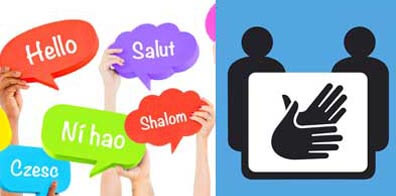
Once you're ready to localise your website, consider that there are three primary phases to the process: internationalisation, translation, and localisation.
Deem the internationalisation stage to be just the groundwork. It begins during the coding and prototype phase of website development and optimises the site for localisation.
The intention underlying website internationalisation is to create a front-end and back-end structure that can be conveniently customised for other markets, languages, and cultures.
For instance, it can help with changes related to date formats, decimals, currency, and string character constraints. It can also help developers avoid using hard-coded and concatenated strings. It is these strings that pose problems while translating and localising website content later.
The initial investment in internationalisation will reduce localisation expenses because your website design will require minor rework in the long term.
The next step after internationalising your website is translation.
This stage should be executed with the guidance of a translation management system (TMS), a software programme that simplifies as much of the translation process as practicable. For example, reuse existing versions of words or sentences you've already translated.
A competent translation service can assist you in selecting, installing, and maintaining the translation memory database configuration that is best for your company.
For example, suppose you have hundreds of product descriptions posted every day in multiple languages. In that case, you'll need a TMS that interfaces with your CMS and sends product descriptions to be translated before being reviewed by humans.
Attempt to employ software that allows translators to interact directly with the site's content. Allowing translators to collaborate directly with programmers will result in a more fluid and collaborative translation process.
When entering a new market, translating a website is just not enough to make an impact. To truly connect with each demographic, a website must be local.
In a nutshell, localisation is the process of customising information to a specific location. When you localise website content, you make it that much more culturally relevant to the target demographic.
Localisation includes not only adjusting inflexion and vocabulary but also modifying all of your website's visual elements. Photos, infographics, call-to-action symbols, and videos should all be tweaked to match local cultural norms.
Prioritising the user experience is an essential element of localisation. The customer experience needs to be adapted to be approachable for a specific culture and language. The website has to work seamlessly in every language. Typefaces that can accommodate numerous languages with varying characters and spacing requirements are a good choice.
Since website localisation is a complex process, there are several regular problems that your team may encounter. Here are a few pointers to consider as you go through the process.
For any queries related to language translation services. Inquire at our email address below or give us a call today!
info@languageservicesbureau.com
Telephone: +91-20-24470509, +91-82370 60559
Similar articles for you...

आमच्या गेल्या महिन्यातील ब्लॉग मध्ये भाषांचे ज्ञान आवश्यक असणाऱ्या करियर क्षेत्रांची माहिती आपल्याला मिळाली. जिथे भाषेचे ज्ञान फायद्याचे ठरते असे इतर व्यवसाय आपण या महिन्यात पाहुयात.

Posted by : Language Services Bureau

The time it takes to learn a language depends on what you want to do with it– here is a great article about language learning and the kind of expectations you can set about the time required for the same!